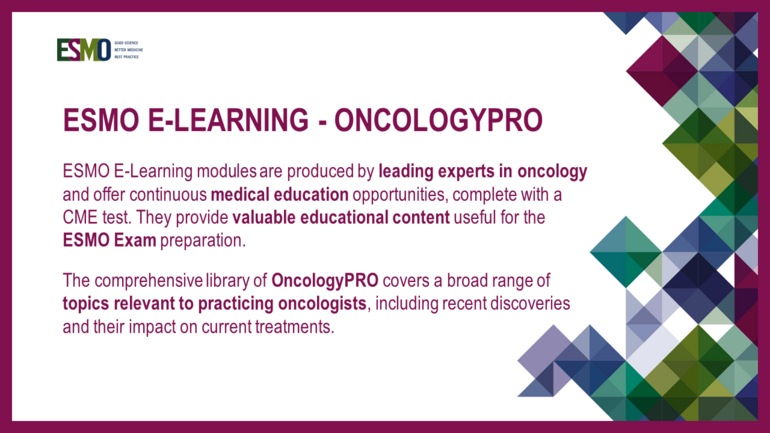This E-Learning module has been produced as part of an ESMO initiative to educate medical oncologists on the different aspects related to cancers in adolescents and young adults, in collaboration with SIOPE.
Adolescents and young adults with cancer represent a unique group of patients with distinct epidemiological, biological and clinical characteristics and, importantly, with special medical and psychosocial needs that are often unmet. Adolescents and young adults are usually considered as the older patients in paediatric oncology, or haematology practice, and the younger patients in adult practice. At present, there are no universally accepted limits that define the age range, because the interface between adult and children’s services is different in different healthcare systems.
The ESMO has embarked into organising this module in collaboration with the European Society of Paediatric Oncology (SIOPE) and professionals involved in the European efforts dedicated to improvement of educational standards for medical professionals involved in the care of adolescents and young adults with cancer.
Basically, no diseases begin or end at age 18 years. However, in many countries the age of 18 defines the beginning of adulthood, with important biological, clinical and legal implications, but in the real health settings these patients are frequently considered as “no man’s land”. Therefore, both societies recognised the magnitude of associated problems and joined forces and expertise resulting in the production of an E-Learning module which outlines the epidemiology, risk factors, management and care, late toxicities, and clinical research in adolescents and young adults with cancer.
The lower incidence of cancer in adolescents and young adults as compared to children and older adults, as well as their under-representation in cancer clinical trials, hamper the elucidation of the particular biological and molecular aspects that may represent the “key” features for a successful therapeutic approach. Indeed, malignant neoplasms that prevail on adolescents and young adults comprise a unique disease entity characterised by a constellation of both genetic alterations and environmental risk factors that contribute to neoplastic transformation.
The diagnosis of cancer in adolescents and young adults is a shocking event that affects profoundly all aspects of life of a person who is just at the beginning of the most active and creative period of his/her life. The fact that adolescents and young adults believe they are “unaffected” by serious disease such as cancer and hence tend to underestimate otherwise alerting symptoms, often leads to delayed diagnosis. Having to comply to a very demanding period of life and experiencing the most intense physical, psychological and emotional changes during adolescence and young adulthood, if diagnosed with cancer they encounter major challenges regarding quality of life, physical appearance, educational obligations and career, as well as personal relations within the family and social environment. Moreover, the achievement of high cure rates has lead to the increasing awareness regarding long-term side effects and toxicity issues of cancer survivors that may affect their life substantially and permanently.
This presentation aims at increasing the awareness of cancer physicians on this unique patient group. It covers all important aspects of the topic including epidemiology and risk factors for cancer in adolescents and young adults, special issues regarding medical treatment and psychosocial care, management of long-term treatment-related toxicities and their impact on the quality of life in survivors and finally underlines the need for participation of adolescents and young adults in clinical trials.
Importantly, this module emphasises on the absolute and often unmet need for a multidisciplinary therapeutic approach of these patients by experienced and trained care-givers including physicians, nurses, psychologists and social and school workers, both in the European level and within the national framework of each country. In this context, we hope that the current presentation may serve as a stimulant for the creation of the appropriate infrastructure, and to trigger the start-up and development of new adolescent and young adult cancer care services.





